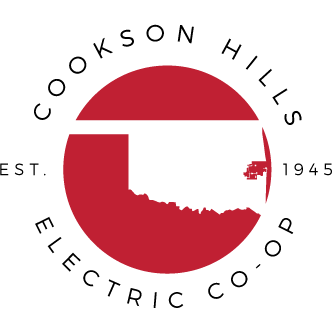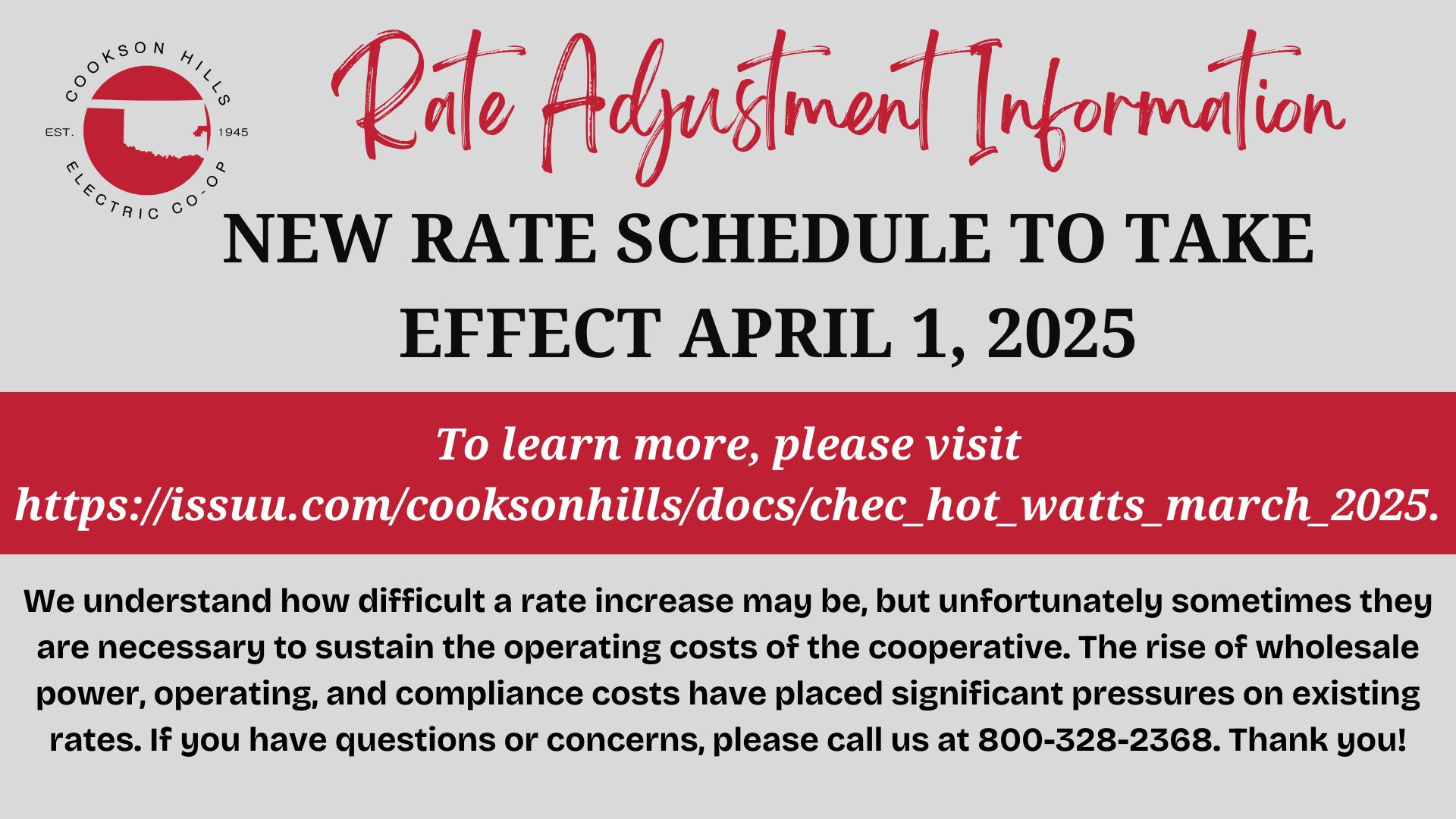About CHEC
In the early 1940's, rural Sequoyah and Haskell County were without electric service. The farmer took care of the farm chores by hand and with the flickering, undependable light of a kerosene lantern. His wife labored over the wood stove and washboard.
After seeing the needs in the rural areas, President Roosevelt signed an executive order on May 11, 1935, establishing the Rural Electrification Administration (REA), bringing electricity to isolated rural areas not serviced by private utilities. The idea of providing federal assistance to accomplish rural electrification gained ground rapidly. After World War II ended, rural electric systems multiplied and began supplying electric service to rural areas across the nation.
Cookson Hills Electric Cooperative began when a group of farmers decided to bring electricity to their rural area. On July 11, 1945, a representative from Sequoyah County met with 48 rural leaders at the Sequoyah County Courthouse. Following a full explanation of the Rural Electrification Program by an REA representative from Stillwater, the farmers voted to accept a plan to proceed to obtain memberships in an electric cooperative and to run electric lines to southeastern Oklahoma.
Many volunteers spent long hours soliciting prospective members. Within the first three weeks, a total of 450 members paid a $5 membership fee to join the organization.
After redistricting and dividing territories, the Articles of Incorporation were filed on October 8, 1945. The first meeting of the Board of Trustees was held on October 16, 1945, at Stigler, Oklahoma. On March 13, 1946, the REA approved the first loan of $305,000 for the construction of 200 miles of electric distribution and service lines.
In January 1947, the Board of Trustees authorized the purchase of one acre of land for $100 to build a substation in Haskell County. In October of the same year, a deed was accepted for property donated by the City of Sallisaw to build a substation in Sequoyah County.
Supplies such as poles, copper wire, and transformers were used for the war effort. After the war ended, there was a serious shortage of materials. The determined farmers continued their quest, and their determination paid off. The co-op's lines were finally energized on June 28, 1948, bringing Southeast Oklahoma out of the darkness. A total of 187 miles of line was energized to serve 502 members. Electricity spelled a new kind of life for farmers and residents of our area.
Today, our electricity is generated by Associated Electric Cooperative, Inc., and transmitted through KAMO Power's transmission lines to 13 substations located at Stigler, Enterprise, Porum, Tenkiller, Sallisaw, Akins, Muldrow, Humphrey, Keota, Marble City, Nicut, Vian, and Liberty. CHEC serves just over 18,000 meters and operates just over 3,000 miles of line from those substations.
CHEC is a member-owned not-for-profit electric cooperative and is governed by a seven-member board of trustees. At the end of each year, margins are allocated to members in the form of capital credits. As of December 2023, CHEC has returned over $18 Million in patronage capital credits to its members.
The legacy of Cookson Hills Electric is etched in our minds from our meager beginnings to where we are today. We are grateful for those before us who made our cooperative what it is today. We look forward to the future of CHEC and of the members and communities we serve.


